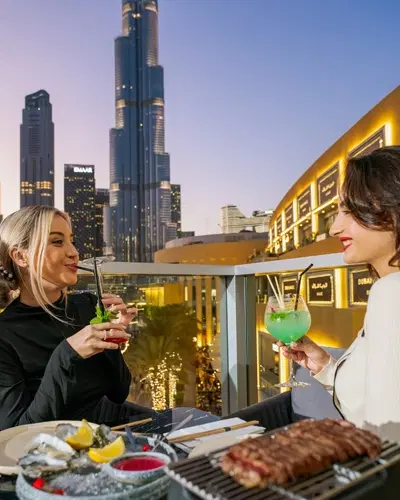Data-Driven Price Growth Overview (2024–2025):
When it comes to real estate investing, numbers tell the real story. One of the most reliable ways to measure an area’s potential is by looking at how much property prices have increased over a given period. In this section, we dive into the latest market data to identify the top-performing areas in Dubai in terms of price growth between 2024 and 2025.
This analysis is based on insights from three of the most trusted property data sources in the UAE:
- Dubai Land Department (DLD): The official government body that records all property transactions in Dubai
- Property Monitor: A leading real estate intelligence platform that tracks live sales trends.
- ValuStrat Price Index (VPI): An independent index that measures price movements across various property types and locations.
According to these sources, Dubai has seen an average price growth of 8.7% across residential properties during this period. However, some locations have outperformed the average significantly due to factors such as new infrastructure projects, off-plan launches, increasing demand from investors and end-users, and limited supply in key communities.
Top 10 Areas by Price Growth (YoY %):
| Rank | Area | Property Type | Price Growth (YoY %) |
|---|---|---|---|
| 1 | Palm Jebel Ali | Villas | 21.5% |
| 2 | Dubai Creek Harbour | Apartments | 18.9% |
| 3 | Jumeirah Village Circle | Apartments | 17.2% |
| 4 | Business Bay | Apartments | 15.4% |
| 5 | Meydan / MBR City | Mixed | 14.8% |
| 6 | Arjan / Dubailand | Apartments | 13.9% |
| 7 | Dubai Hills Estate | Villas | 13.6% |
| 8 | Dubai South / Expo City | Mixed | 12.8% |
| 9 | Jumeirah Golf Estates | Villas | 12.3% |
| 10 | Al Furjan | Apartments | 11.7% |
Observations from the data:
- Luxury waterfront communities like Palm Jebel Ali have seen the strongest appreciation, with prices increasing by more than 21% in just one year. This is due to the area’s relaunch and exclusivity, attracting high-net-worth buyers globally.
- Dubai Creek Harbour, backed by major Emaar developments and the under-construction Blue Line metro, is quickly becoming one of the city's hottest off-plan zones.
- Affordable communities such as JVC and Arjan continue to grow due to high rental yields, attractive payment plans, and their appeal to first-time buyers and mid-income investors.
- Business Bay, a central business and residential hub, is seeing a price boost due to branded residences, canal views, and its close proximity to Downtown Dubai.
- Master-planned luxury zones like MBR City, Dubai Hills Estate, and Jumeirah Golf Estates are performing well due to growing family demand, international schools, and lifestyle-centric developments.
Key Trends Behind the Numbers
- Off-Plan Dominance: Areas like Dubai Creek Harbour and MBR City have seen strong off-plan sales, often with flexible payment plans and lower initial prices making them ideal for capital appreciation.
- Luxury Demand: There is a growing appetite for luxury villas and branded residences, which is evident in the price surges in Palm Jebel Ali, Jumeirah Golf Estates, and Dubai Hills.
- Affordability Meets Demand: Budget-friendly neighborhoods such as Arjan and JVC are seeing sharp appreciation due to high occupancy rates and consistent rental demand.
- Infrastructure Boost: Communities close to upcoming metro stations, highways, and schools are showing higher-than-average growth, thanks to improved connectivity and quality of life.
Why This Matters for Investors:
For investors and end-users alike, understanding where prices are rising the fastest helps in identifying areas with strong momentum. These growth hotspots often offer:
- Higher ROI through capital gains and rental income
- Better resale opportunities in the short to medium term
- Long-term value as infrastructure matures and demand increases
Note: By using verified data and tracking year-on-year growth, investors can make smarter, more strategic decisions when entering the Dubai real estate market in 2025.






